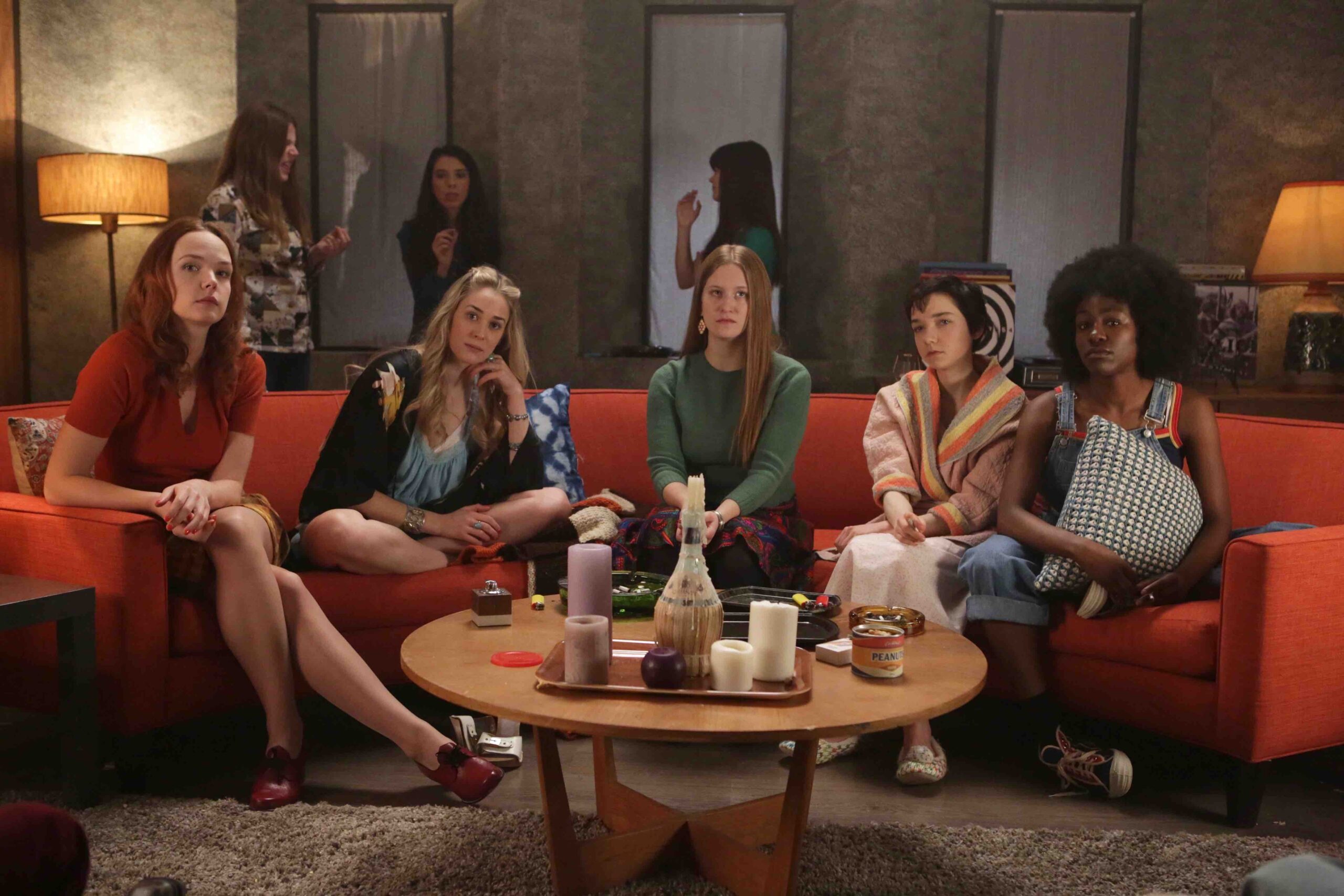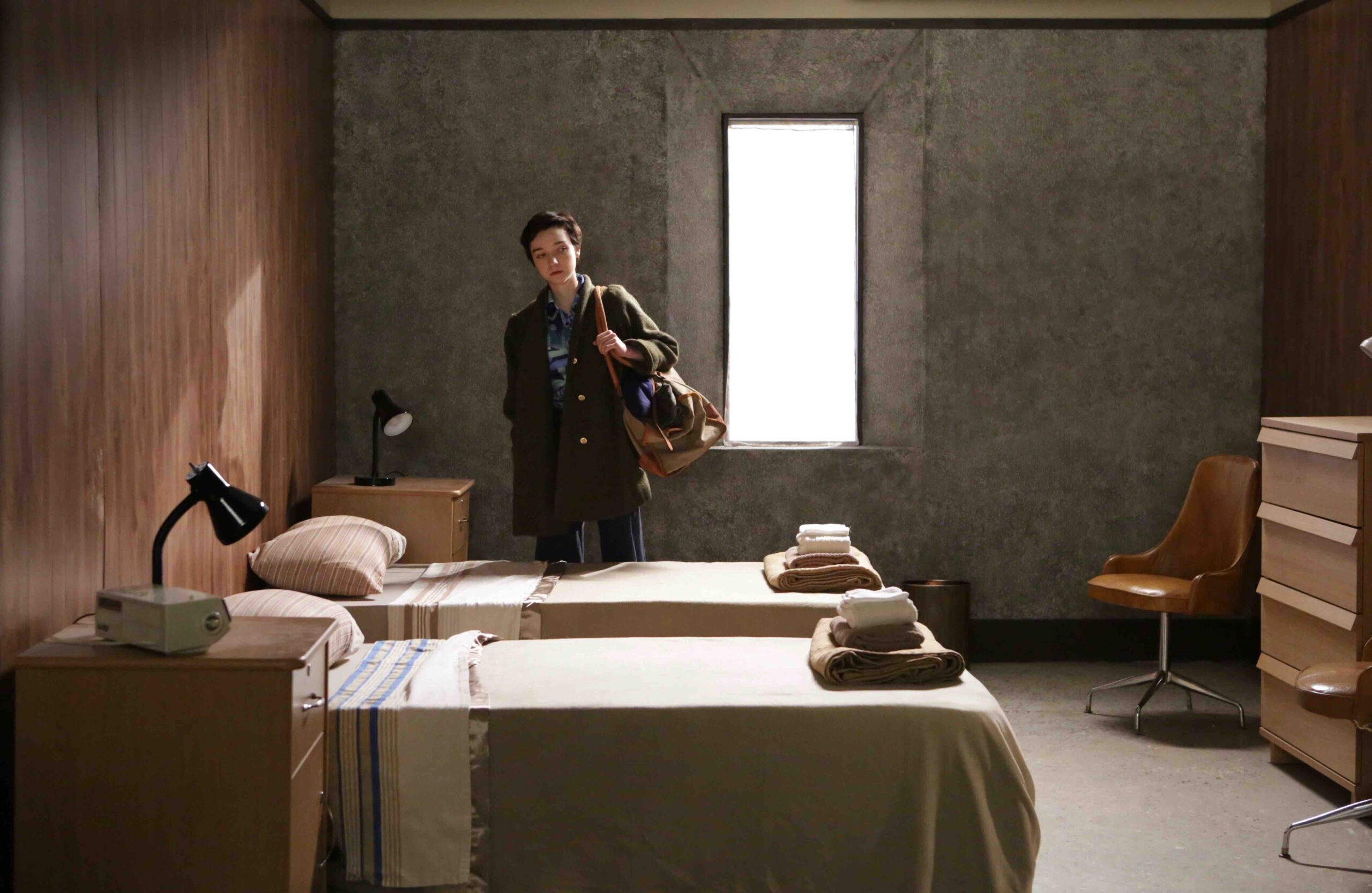
This real-life ‘Marijuana Conspiracy’ is stranger than fiction
Whether spotted on the side of a bus, in the back of an alternative newspaper, or making the rounds as a viral Reddit post, we’ve all been lured in at one time or another by an enduring fantasy that’s at once wildly outlandish and totally plausible—“Get Paid to Smoke Marijuana.”
‘The Marijuana Conspiracy’ is available on demand and via digital streaming starting on 4/20.
Late night stoner lore overflows with oft-told apocryphal tales of someone’s brother’s old college roommate who supposedly participated in a legal, government-funded cannabis experiment: “…and then he stole one of the seeds from the weed they gave him to smoke, and that’s where the strain G-17 comes from. The G stands for government, man.”
In the fantasy version, you’re admitted into a research facility specially decked out like an old-school hippie crash pad. Some square scientist type hands you a joint of experimental super-weed. You spend an hour getting lit and testing the effects of high-THC cannabis on premium ice cream brand preference. And then you head home with a fistful of cash and a heady buzz.
But that’s hardly how things went for the 20 young women who actually spent three months in 1972 isolated in a Canadian research hospital while they participated in what the Toronto Star called “one of the weirdest scientific experiments in this country’s history.”
The Marijuana Conspiracy, a new film that streams starting on April 20, dramatizes that true-life experiment, which collected mountains of data but never publicly released a single finding.
A grand experiment that got buried
The impetus for the film came from Doreen Brown, one of women who participated in the study. Brown shared her story years after the experiment ended, which led to investigative reporter Diana Zlomislic writing about the study in a 2103 feature for the Toronto Star.
Told from several points of view, The Marijuana Conspiracy deftly explores the various motivations and experiences of the experiment’s funders, designers, implementers, and test subjects. The women depicted in the film are composite characters, and certain interpersonal storylines are fictionalized, but the overall narrative stays admirably true to the facts.
“The historic relevance of this story was a big draw for me,” writer/director Craig Pryce told Leafly. “In Canada, in 1972, you could get seven years in jail for possession of a single joint on the first offense.”
That same year, Prime Minister Pierre Elliott Trudeau (the current Prime Minister’s father) was actively pushing for reform. After four years of intense research, his hand-picked Le Dain Commission had just issued a final report unequivocally calling for the decriminalization of cannabis for personal use, including at home cultivation.

Trudeau the father: Should we legalize?
As the next step in his legalization push, Prime Minister Trudeau the First sent representatives across Canada to hold public hearings, using the findings of his blue-ribbon commission to allay the public’s fears and make a science-based case for ending cannabis arrests.
But John Robarts—Ontario’s staunchly conservative Premier—wasn’t about to let something as fungible as the facts get in the way of a thriving moral panic. From his office in Toronto, Robarts promised his “law and order” base that weed would never be legal. Instead, his government’s war on marijuana would only escalate.
Caught in the middle was C.G. Miles, a young psychologist who remained at least officially undecided on the drug’s potential dangers and the wisdom of legalization. Diana Zlomislic wrote about the researcher’s motivation:
“To make a sound decision, it is necessary to have valid information respecting the effects of the drug on health and social functioning,” Miles wrote in a preliminary report on cannabis research. With a pile of provincial money, and perhaps unbeknownst to Robarts, Miles launched a massive marijuana study that promised to inform discussion about whether the drug’s legal status should be changed.
A committed behaviorist, Miles ascribed to B. F. Skinner’s belief that to best understand human beings, scientists should ignore things like emotions and motivations in favor of myopically observing behavioral responses to various stimuli.
Today, Skinner is best remembered for his famous Skinner Box (or “Operant Conditioning Chamber”), an “enclosed apparatus that contains a bar or key that an animal can press or manipulate in order to obtain food or water as a type of reinforcement.” The idea being to strictly control every aspect of a test subject’s environment, thereby eliminating as many potential points of external variation as possible.
A behavioralist creates a Skinner Box

Guided by those same behaviorist principles, Miles created—in essence—a Skinner Hot Box and began using it to test the prevailing notions about cannabis use at Toronto’s Addiction Research Foundation.
Since 1949, the Foundation had been studying the problem of alcoholism. When government funding for research began expanding dramatically in the 1960s, the institution pivoted to investigating all kinds of non-medical drug use.
In his first major cannabis study at the Addiction Research Foundation, Miles had tasked a group of men with assembling small stools with sea grass seats during a 70-day study. Paid $2 for each completed stool (while steadily smoking cannabis of steadily increasing potency), the men eventually staged a strike, demanding an increase in wages. When researchers upped their pay to $2.75 per piece, they resumed work—just as stoned, but with increased productivity.
“Evidence shows that the inability or unwillingness to earn following high cannabis consumption can be overcome by an economic incentive,” Miles wrote.
At the time, the thought that legalization would turn Canada’s young people into a generation of perpetually stoned layabout bums was not only taken seriously, it was an oft-cited reason for maintaining prohibition.
Miles’ initial study poured cold water on that notion. But the idea of cannabis use leading to labor organizing likely didn’t win many converts among the establishment.
For his next study, Miles decided to investigate the fears and prejudices around the taboo subject of women smoking cannabis. That’s where The Marijuana Conspiracy begins.
Arrival: Jan. 31, 1972

On January 31, 1972, the grand experiment began with a formal dinner. A group of 20 women, ranging in age from 18 to 35, ate together at a single long table. Immediately after the meal they were divided into two groups.
Ten of the women would be required to smoke two joints of increasing potency every night for the duration of the study. The control group did not have to consume any cannabis—and did not get any free joints—but they could each choose to purchase low-THC cannabis cigarettes for 50 cents each from an on-site commissary that also sold liquor, cigarettes, junk food and toiletries.
For 93 days, neither group had any contact with the outside world beyond occasional letters to and from their families. They weren’t allowed to leave their section of the hospital, where they were monitored 24/7 by nurses and researchers who checked in every 30 minutes to track their progress and record their behaviors.
At the heart of the experiment was an inquiry into how legalization might affect the Canadian economy. So while the women in both groups had their vital organs, blood, and urine constantly monitored, much of Miles’ focus centered on how cannabis did or did not affect each subject’s work productivity and her motivation to make money.
Taught how to weave woolen belts on a traditional Guatemalan back-strap loom, each test subject earned $2.50 for every belt, provided it passed inspection. Stick it out to the end of the study, the women were told, and you’ll keep the money, minus whatever you spent at the commissary. Leave even a day early, and you’ll forfeit nearly everything.
Getting high, having fun, making friends
As The Marijuana Conspiracy makes clear, several women clearly suffered under these highly restrictive conditions. At least one woman in each test group left early, citing mental health concerns. Today, strict ethical guidelines regulate such experiments, but in 1972 little oversight existed. (The infamous Stanford prison experiment took place one year earlier.)
Nor did researchers worry that negative outcomes might be blamed on cannabis, when perhaps being held captive indoors for three months while researchers write down everything you say and do could be the problem.
“The first month or so was the best part—getting high, having fun, and making friendships with the other women,” recalled Doreen Brown, one of the 20 participants, and the woman whose story inspired the film. “There were no worries about ‘normal’ life, like working at a job I didn’t enjoy, paying rent, or supporting myself in general. It was an escape.”
But as time wore on, the novelty wore off. The potency of the cannabis in the nightly smoke sessions increased. Brown’s mental health began to deteriorate, and she later described the experience as “torture.” By the final week of the study, according to the Toronto Star, “the women who were left on the mandatory smoking unit refused to continue. “
Back when government weed was strong
The high-grade cannabis in question was supplied by Health Canada, a federal agency charged with administering Canada’s national healthcare system.
One year earlier they’d established a farm in Ottawa, known as the Central Experimental Farm, so the government could grow everything from high-THC strains to industrial hemp for research purposes. Governments from around the world supplied seeds of more than 350 different strains.
The Central Experimental Farm was originally located on a stretch of federal land in the center of Ottawa, a convenience that eventually became a liability when word got out about a hidden cannabis garden surrounded by tall rows of corn plants. Naturally, local cannabis enthusiasts began helping themselves.
Eventually the garden would be moved indoors for security reasons. But until then, all kinds of cannabis flourished, with plants growing up to 18 feet tall. One administrator boasted of cultivating cannabis three times more potent than what was then available from local dealers. Some of the most potent flower from that harvest found its way into the joints smoked twice nightly inside the hospital.
The results go conveniently missing
What did C.G. Miles discover after 93 days? Nobody knows.
Data from the study was never publicly released. Why? Evidence collected over the past half-century points to powerful interests spiking the study’s findings simply because they didn’t reinforce an anti-cannabis message. One of the main themes of The Marijuana Conspiracy is the fact that the entire project was, in fact, a conspiracy.
Several attempts—over several decades—by the women in the study to have the Addiction Research Foundation release more information basically fell on deaf ears. C.G. Miles passed away in 2009 without ever making a significant public statement on the matter. But Dr. Galfrid Congreve, a junior researcher on the project, confirmed to the Toronto Star that his team did in fact produce “mountains of data.”
‘Absolutely massive’ trove of data
“We had data on their productivity, their spending, and their activity in terms of were they listening to music, or playing table tennis, were they laughing? We had unique anecdotal data for any squabbles, disagreements. And it was absolutely massive. Not to mention the physiological data.”
According to the Toronto Star, at least some of the study’s data eventually found its way to an economist at Texas A&M University. His analysis confirmed that despite smoking a lot of high-grade cannabis under fairly dystopian circumstances the women in the mandatory weed group remained “perfectly rational” and “worked their butts off.”
Remained friends over the years
Marcia MacKinnon, a young woman from Ottawa in the early 1970s, learned of C.G. Miles’ study through a friend who’d applied but been rejected. Intrigued, she sent an application to the Addiction Research Center and was accepted. Like most of the women who participated, she sees the experience as an important part of her life, one that brought with it a complex blend of pros and cons.
To this day, MacKinnon remains angry that the women all gave up months of their lives for a study that never published. But she’s also hosted multiple reunions for her fellow test subjects over the years. Nothing that happened during the study, or since, has changed her positive perception of cannabis.
“Since 2014, I’ve used medical marijuana to dull the pain of severe sciatica in my back,” she told Leafly. “My husband used to grow pot and he makes brownies that I eat before bed. It works great for my back pain and for help sleeping.”
Lived to see Trudeau the son legalize nationwide
Although it’s mostly played straight as a period piece, The Marijuana Conspiracy ends with a postscript scene set in 2018. Now in her 60s, one of the test subjects fires up a doobie while watching on TV as current Prime Minister Justin Trudeau signs Canada’s cannabis legalization bill into law.
In her words: “It’s about fucking time.”
David Bienenstock
Veteran cannabis journalist David Bienenstock is the author of “How to Smoke Pot (Properly): A Highbrow Guide to Getting High” (2016 – Penguin/Random House), and the co-host and co-creator of the podcast “Great Moments in Weed History with Abdullah and Bean.” Follow him on Twitter @pot_handbook.
View David Bienenstock’s articles
By submitting this form, you will be subscribed to news and promotional emails from Leafly and you agree to Leafly’s Terms of Service and Privacy Policy. You can unsubscribe from Leafly email messages anytime.

Post a comment: